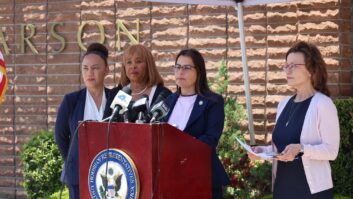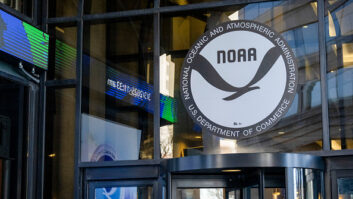The Blue Alert system was designed to give law enforcement the�means to speed the apprehension of violent criminals who kill or seriously injure local, state or federal law enforcement officers. At the request of the Justice Department, the FCC is now considering the creation of a designated Blue Alert �event code� that will be disseminated by the EAS system.
iStockphoto/Faysal Ahamed

Long before anyone figured out that broadcasting could be entertaining, informative or that it could be financed by advertisers (in fact, before radio could speak and TV see) broadcasting�s most obvious and highest purpose was front and center: saving lives and property. Everything else we do, good or evil, pales in comparison. If we don�t do this, we have no legitimate reason to exist and �our� spectrum should be given away to unlicensed services, mobile alerting, and all those IoT devices and things that do good.
That said, emergency communications are a complex topic, and an arena filled with special interests, including us broadcasters. The proposed addition of a �Blue Alert� exposes the complexity of this spooky world. Let�s go through the basics.
First: alerting and informing are two distinct functions. Alerting is a brief message that quickly and unavoidably tells people to take cover to prevent death or injury. EBS did that. All EAS did was automate the alerting function, prioritize it and target it with a resolution of down to one-ninth of a county. It is intentionally simple, fast, compact and language agnostic. Alerting has many enemies. The most perverse is complexity. As the alerting codes expand and the processing of those alerts becomes more complicated, the odds of failure and thus death and disaster increase.
Second: every available means should be used to get the alert message out quickly and unavoidably. EAS was designed to create a �road block,� when necessary. No matter what button you pushed on your radio or TV channel you turned to, you would be greeted with the same emergency message at the same time. Not so gloriously, many a broadcaster elected to delay certain messages to better fit in the program stream. Nonetheless, broadcasters were certainly correct in believing that under some circumstances, they could and should hit the alert button themselves. Many a broadcast weather department has identified a tornado long before the weather service managed to validate the situation, enter all the data and push the button. (This may become moot as the weather services shift to artificial intelligence and automate their processes.)
Yesterday at 9 p.m., while I was on the light rail, all of the smartphones simultaneously went off with the age-old, skeuomorphic 853 and 960 Hz tones from the EBS days of a quarter century ago. It was an Amber Alert. I tuned around, looked at a few web pages� nothing for several minutes, until broadcasters began posting their material. By default, smartphones will all alert.
There were a few broadcast EAS receivers built that would automatically turn on/wake up, and of course, Weather Service radios do � but weather radios don�t necessarily carry alerts that are not weather related, even storm surge is a recent addition to WX radio alerting. Probably the best part of �Advanced Emergency Alerting� (in progress as part of Next Gen broadcast) is that it more-or-less mandates that Next-Gen media devices be able to alert and then direct people to the relevant information.
Third: informing is entirely a different matter, which may or may not follow an alert. Informing is what news departments do. There is no other establishment that aggregates, parses, verifies, prioritizes, analyzes and presents and explains timely information. After �take cover� � alerts instruct us to �tune to our local station� for a reason. Obviously, only a handful of broadcasters take on this role, but for every square inch of this country, if not the whole world, there is at least one broadcast news organization that serves it.
We can separate broadcasters into participating and none-participating stations, but in the end, it is a broadcast news organization that traffics in school closings, shelter locations and general directions.
Katrina was a disaster, but it would have been orders of magnitude worse without broadcast news departments and broadcast engineers stringing up antennas and reviving communications equipment � with a healthy hand from the other guys with �free spectrum,� and some know-how, the Hams.
There is absolutely no other organization in our world, government or private, that can come close to performing this function. Conflating the functions of alerting and informing makes nothing but an incomprehensible and unmanageable mess.
So, Blue Alerts? Only a bad person would go on the record opposing this, or any other use of emergency alerting and informing. And that�s a problem. There are no adults in the emergency communications room to keep things that conflate the two functions apart or weigh the risks/rewards of added complexity.
We broadcasters have either given up or lost our lead in emergency alerting, and while they are low probability events, they are high impact. Only broadcasters have any chance at all of processing the information and distributing it, albeit now on many platforms. If we don�t do this, we really don�t deserve the spectrum.







